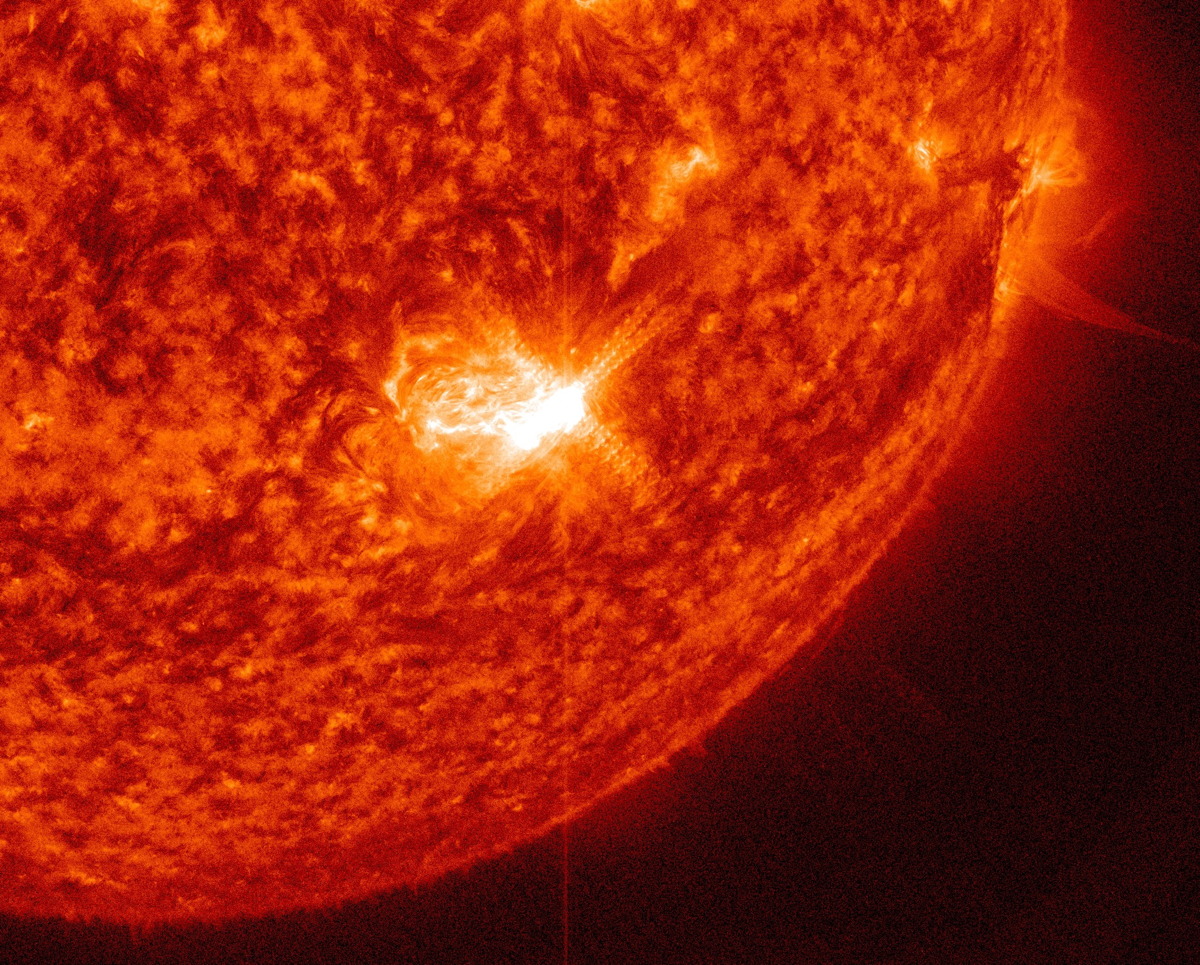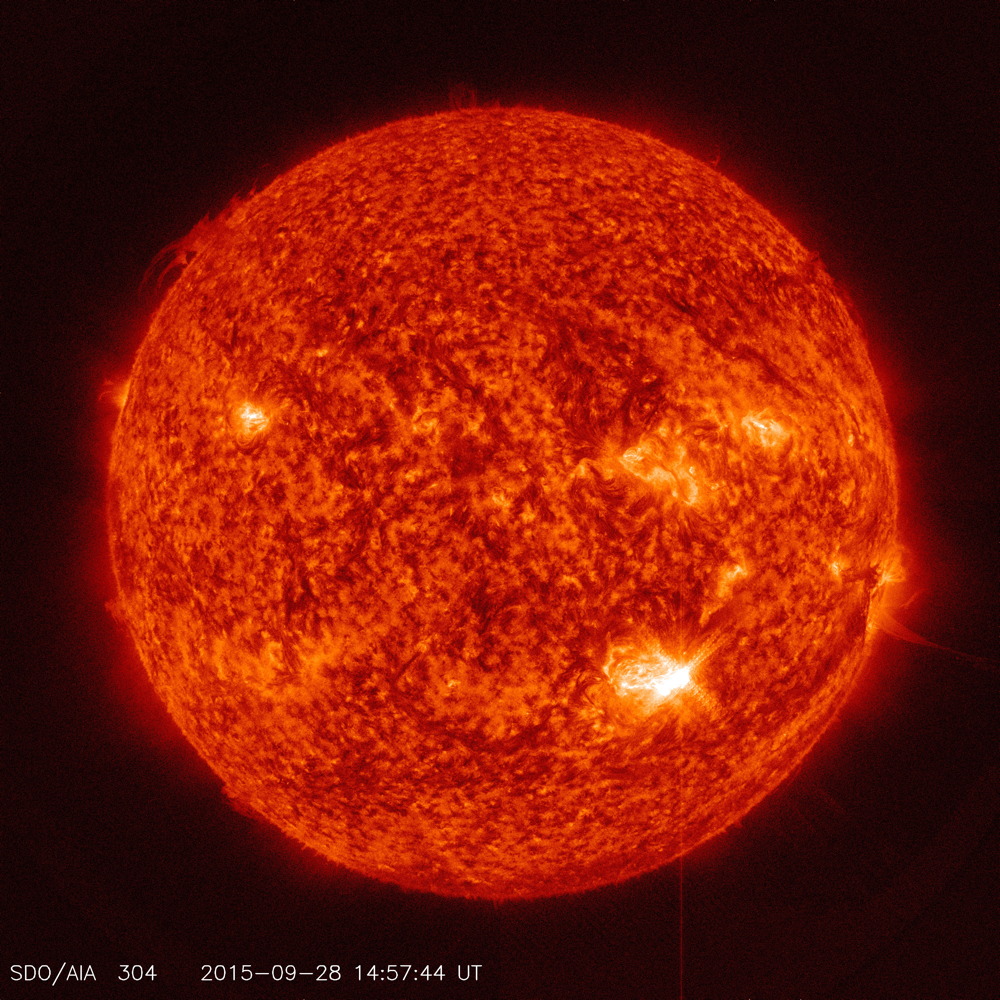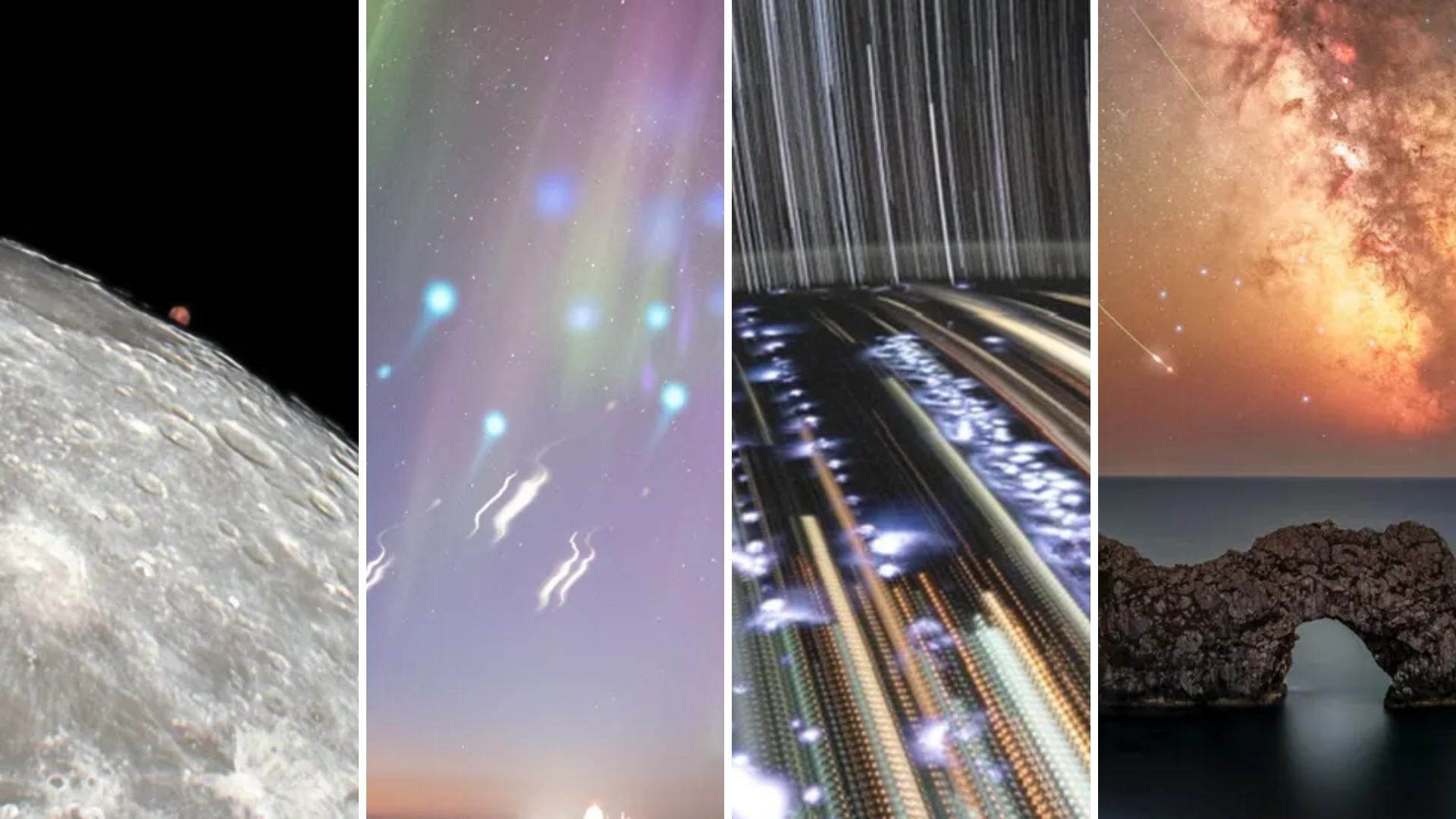Intense Solar Flare Unleashed from Unruly Sunspot

An intense solar flare took out low-frequency radio communications over South America and the Atlantic Ocean earlier today (Sept. 28), and the unstable sunspot is likely to erupt again.
NASA's Solar Dynamics Observatory spacecraft captured an amazing video of the solar flare from space.
At 10:53 a.m. EDT (1453 GMT), the medium-size M7-class solar flareburst from the sunspot called Active Region 2422 (AR2422). The explosion unleashed extreme ultraviolet radiation that rushed over the Earth, officials at the National Oceanic and Atmospheric Administration's Space Weather Prediction Center said in a statement. The peak of the action, when there was a brief radio communications blackout on the sunlit side of Earth, was about 5 minutes later, at 10:58 a.m. EDT (1458 GMT). The flare ended 7 minutes after that. [Biggest Solar Flares and Sun Storms of 2015 in Photos]
Sunspots are caused by knots and complications in the sun's magnetic field, and the particularly tangled field within AR2422 generated this recent solar flare when it released a buildup of magnetic energy suddenly — causing a burst of high-energy radiation that rushed to Earth and supercharged the atmosphere. Scientists do not expect an associated coronal mass ejection, where physical gas ejected from the sun hits Earth.
That M7-class flare was strong enough that the extra atmospheric charge interfered with low-frequency radio communications over South America and the Atlantic Ocean, with weaker effects farther out. And there's a chance that sunspot AR2422 may release more solar flares.
"AR2422 has an unstable 'beta-gamma-delta' magnetic field that could erupt again at any moment," Spaceweather.com said in its forecast. At the time of this writing, there was a 40-percent chance of another, similarly sized solar flare and a 5 percent chance of a powerful X-class flare during the next 24 hours. X-class flares can cause planet-wide radio blackouts and radiation storms, and are 10 times more powerful than M-class flares.
NASA's Solar Dynamics Observatory is an observational spacecraft that has been orbiting the sun since 2010, taking incredibly high-resolution images of the solar surface, gathering data about the sun's magnetic activity and helping to predict solar storms' impacts on Earth.
Breaking space news, the latest updates on rocket launches, skywatching events and more!
Email Sarah Lewin at slewin@space.com or follow her @SarahExplains. Follow us @Spacedotcom, Facebook and Google+. Original article on Space.com.

Sarah Lewin started writing for Space.com in June of 2015 as a Staff Writer and became Associate Editor in 2019 . Her work has been featured by Scientific American, IEEE Spectrum, Quanta Magazine, Wired, The Scientist, Science Friday and WGBH's Inside NOVA. Sarah has an MA from NYU's Science, Health and Environmental Reporting Program and an AB in mathematics from Brown University. When not writing, reading or thinking about space, Sarah enjoys musical theatre and mathematical papercraft. She is currently Assistant News Editor at Scientific American. You can follow her on Twitter @SarahExplains.

